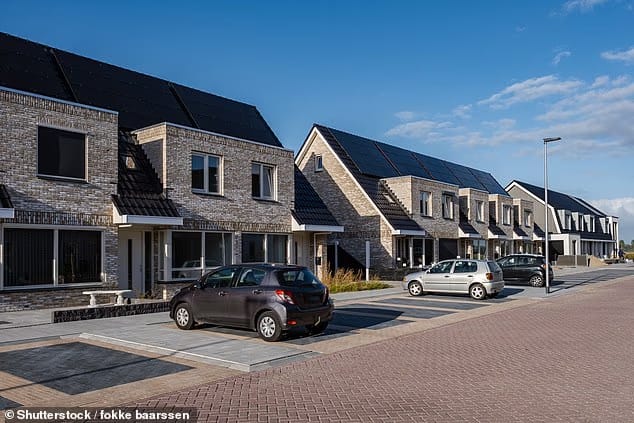- Grid Brief
- Posts
- Blackout Risks Soar // Data Center Growth Questioned // Grid Chaos in the Netherlands
Blackout Risks Soar // Data Center Growth Questioned // Grid Chaos in the Netherlands
GridBrief is back from a brief summer break, and we’re recharged. In the coming weeks, you’ll see new features including weekly charts, analytics, and deeper dives into the grid’s evolving storylines. But for now, the blackout alarm bells are ringing. This issue covers the DOE’s dire reliability forecast, overinflated AI power demand claims, and a chilling glimpse into America’s possible future—courtesy of the Netherlands’ rationed grid.
DOE: U.S. Grid Blackouts Could Multiply 100x by 2030

The Department of Energy published a bombshell report this week estimating that blackouts could increase one hundredfold by 2030—rising from 8 to over 800 hours annually—unless the U.S. halts plant retirements and ramps up firm generation.
The report, mandated by President Trump’s energy emergency order, outlines a new methodology to flag regions at high risk of outages and justify federal interventions. The model anticipates 104 GW of plant retirements by 2030 but only 22 GW of firm replacement capacity—leaving a gaping reliability hole, especially as data centers drive up demand.
Critics, unsurprisingly, abound. Advanced Energy United and the Sierra Club dismissed the analysis as skewed, warning it undervalues solar, wind, and storage. But the DOE isn’t backing down: Energy Secretary Chris Wright declared that “radical green ideology” has made the grid dangerously unstable. Key context:
Data centers alone could account for 50 GW of new peak demand.
Building a data center? 18 months. Building the firm generation to power it? 5+ years.
Even with no retirements, outage risk still rises 30x in some regions.
Utilities and investors should take note: the DOE’s model will likely be used to force the preservation of aging gas and coal plants under 202(c) emergency authorities. Legal challenges are inevitable, but the regulatory ground is shifting fast.
Report: AI Power Forecasts Don’t Add Up—There Aren’t Enough Chips
A new report by London Economics International throws cold water on the current panic over data center electricity demand. According to their analysis, U.S. projections would require 90% of the world’s AI chip supply just to meet data center growth targets—an utterly implausible scenario.
This “sanity check” suggests utilities are dramatically overbuilding based on faulty assumptions, putting ratepayers on the hook for capacity that may never be used. Some key takeaways:
Chip manufacturing isn’t scaling fast enough to meet these demand projections.
Many interconnection requests are duplicative—utilities are seeing up to 10x more applications than will likely be built.
Risk for consumers: Overbuilding = higher electricity bills and stranded assets.
This report dovetails with DOE’s reliability concerns but from the opposite angle—perhaps we’re overreacting. The truth may lie somewhere in between: inadequate generation to meet a fraction of exaggerated demand.
Netherlands Begins Rationing Electricity—Is America Next?

Europe’s energy warning shot just landed. The Netherlands is now rationing electricity after overwhelming demand—driven by solar expansion and grid neglect—outpaced infrastructure upgrades. More than 11,900 businesses are stuck in line for grid connections. Some may wait until the mid-2030s.
The Dutch case isn’t unique—it’s just early. The country raced to electrify post-Groningen gas shutdown, but never invested fast enough in cables, substations, or skilled labor. Now:
Hospitals and fire stations are delayed.
Industrial users face forced curtailment.
Tariffs are rising 4.7% annually through 2034.
Sound familiar? If America continues to approve data centers without grid upgrades—or ignores permitting, labor shortages, and NIMBY resistance—we’ll find ourselves on the same path. Except bigger, and more expensive.
Upgrade to Grid Brief Premium to get extra deep dives into energy issues all over the world.
Conversation Starters
CNBC: These 10 states are best equipped to power the AI revolution.
Washington, Nebraska, and South Dakota top the list thanks to low outages and cheap electricity. But even these “grid strongholds” face growing challenges from surging demand.Energy Institute at Haas: Every Electricity Demand Reduction is a Cost Shift.
A sharp reminder: when customers install solar, LED bulbs, or efficient fridges, it shifts costs to everyone else—especially in places like California where fixed grid costs are buried in per-kWh rates.Energy Analytics & Mark Mills: Top U.S. universities are teaching energy fantasy, not fact.
A survey of 1,425 courses shows over 70% are “climate-focused” with fossil fuels barely mentioned. That’s a problem when 80% of global energy still comes from fossil fuels.
Good Bet, Bad Bet
Good Bet: NorthWestern Energy (NWE)
Montana’s largest utility is poised to benefit from the North Plains Connector project and a surge of interest in resilient, affordable grids. With high reliability and growing transmission potential, NWE may become a key AI-power player in the Northern Rockies.
Bad Bet: Enphase Energy (ENPH)
Rooftop solar remains costly—about $5.19/watt in California—and increasingly controversial due to massive cost-shifting. As regulators revisit net metering and utilities push back, Enphase could see serious margin compression ahead.
We rely on word of mouth to grow. If you're enjoying this, don't forget to forward Grid Brief to your friends and ask them to subscribe!